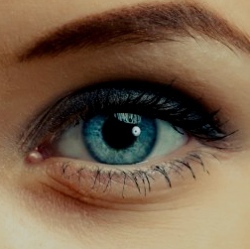
Caused by a lack of tear fluid, dry eye syndrome is among the world’s most common eye diseases. Although it rarely results in complete vision loss, it is painful, and can lead to ulcers or scars on the cornea. There may be new hope for sufferers however. Scientists have created an implant that causes the eye to produce more tears.
In lab tests, it was implanted below the inferior lacrimal gland in rabbits’ eyes. When activated wirelessly, the implant stimulated the gland, resulting in a production of almost 57 percent more tears. The scientists got an even better (and longer-lasting) response when they used the device to stimulate the animals’ afferent neural pathway, this is the link between the brain and sensory neurons in the eye, which activates the tearing response.
That said, the protein and lipid content of the artificially-induced tears still needs to be analyzed. This is because in some cases of dry eye, it’s not so much a matter of there not being enough fluid, so much as it’s a matter of the fluid that’s present being of the wrong consistency.
The implant is currently undergoing clinical trials, in order to obtain FDA approval. Palanker hopes that if all goes well, it could be commercially available within a year.
